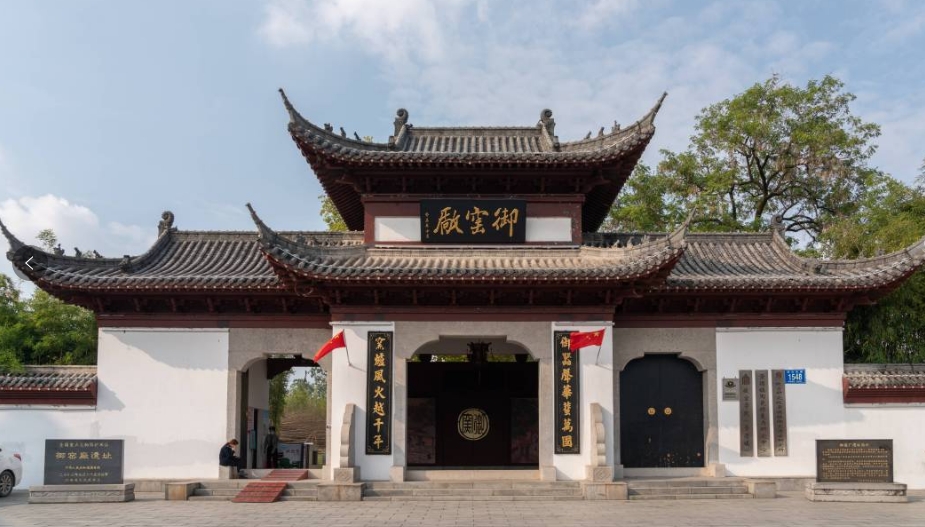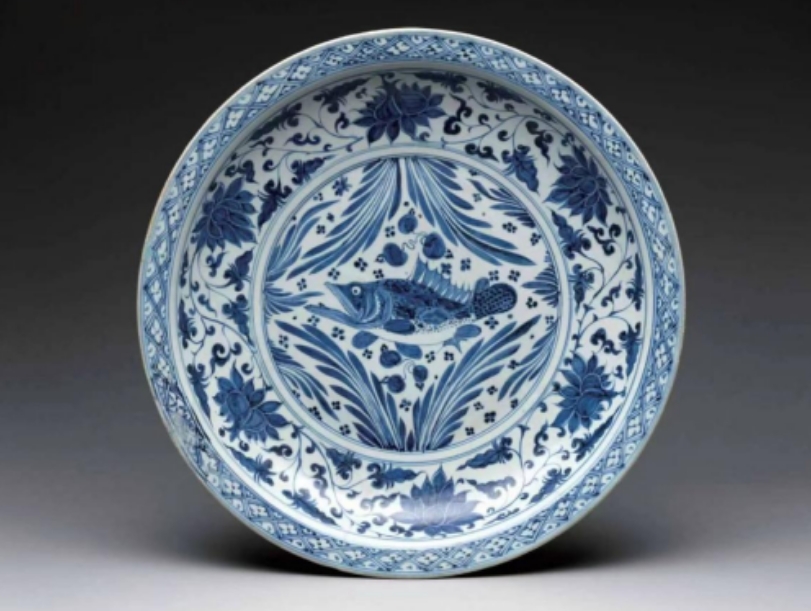Robert Finlay, in his The Story of Blue and White Porcelain, remarked: “Since its invention in the 7th century, porcelain has been at the heart of cultural exchange. Across the Eurasian continent, porcelain has been a significant medium, traversing great distances and facilitating the assimilation and spread of artistic symbols, themes, and patterns.”
Before the 18th century, the craft of porcelain-making was uniquely Chinese. In English, the word “china” refers both to the country and to porcelain itself—an undeniable protagonist of the Maritime Silk Road, playing a significant cultural role in world history. Chinese porcelain has long carried meanings far beyond that of a mere craft, embodying artistic traditions, international trade, and cultural exchanges.
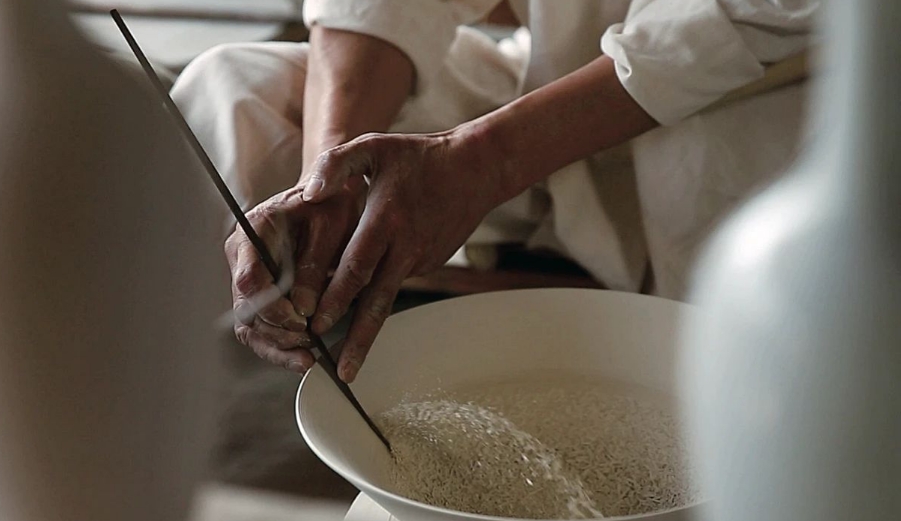
Jingdezhen’s Handcrafted Porcelain Art
All of this began in the small city of Jingdezhen in Jiangxi province, in the fusion of clay and fire, under the craftsmen’s hands and eyes.
Jingdezhen is a city with craftsmanship embedded in its genes. According to The County Annals of Fuliang (Fuliang was Jingdezhen’s ancient name), as early as the Han Dynasty, sporadic kilns were already burning along the foothills and riversides. By the Northern and Southern Dynasties, porcelain production had begun on a larger scale.
During the Sui and Tang dynasties, Jingdezhen’s craftsmen frequently became “trending topics.” For instance, Emperor Yang Guang of the Sui Dynasty once ordered the craftspeople of Xinping Town (the ancient name of Jingdezhen) to create large porcelain figures of lions and elephants. Despite the high risk of failure, the artisans successfully produced these works, which were transported north to the Xianren Palace in Luoyang.
By the time of Emperor Zhenzong of the Song Dynasty, owning a piece of Jingdezhen porcelain had become a symbol of nobility and elegance. Emperor Zhenzong was so fond of the local porcelain that he ordered his reign name “Jingde” to be inscribed on the pieces—thus giving birth to the name “Jingdezhen.”
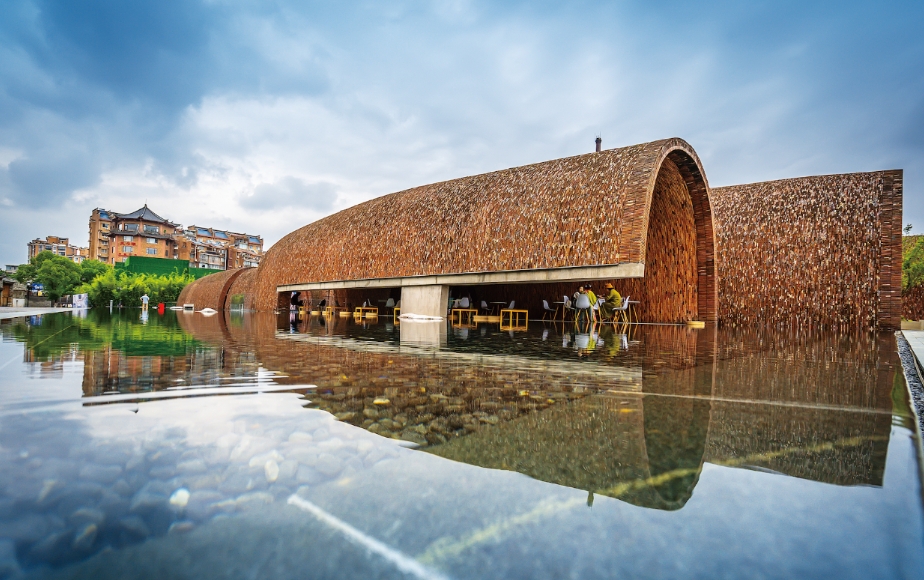
Jingdezhen Imperial Kiln Museum
From the Yuan Dynasty through the Ming and Qing Dynasties, the imperial court established official kilns in Jingdezhen, gathering the finest craftsmen, sparing no expense, setting no time limits, and not requiring a specific output—pursuing skill and quality above all else. The products of these kilns could have no flaws; pieces that didn’t meet the standards were simply shattered. This nearly obsessive approach honed Jingdezhen’s porcelain craftsmanship to its zenith over more than six centuries.
From the Song and Yuan dynasties to the voyages of Zheng He, Jingdezhen porcelain was always a key player in maritime trade. The “Maritime Silk Road” was even referred to as the “Maritime Porcelain Road.” The stringent standards of the imperial kilns, combined with the vast overseas market and vibrant domestic demand, created a stable and unique ecosystem of craftsmanship in Jingdezhen.
1,Jingdezhen-Blue and white porcelain
When it comes to Jingdezhen, the first thing that comes to mind is blue and white porcelain. Blue and white porcelain was created and fired at Hutian Kiln in Jingdezhen during the Yuan Dynasty. It became one of the mainstream porcelain paradigms in the Ming Dynasty and reached its peak during the Kangxi period of the Qing Dynasty.
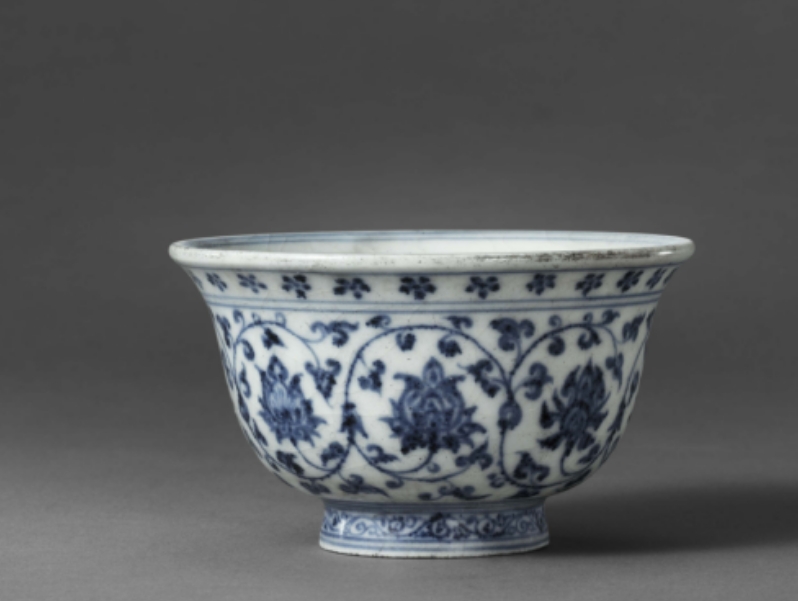
△ Ming Yongle blue and white porcelain cup with wrapped branch lotus pattern, collected in the Palace Museum, Beijing.
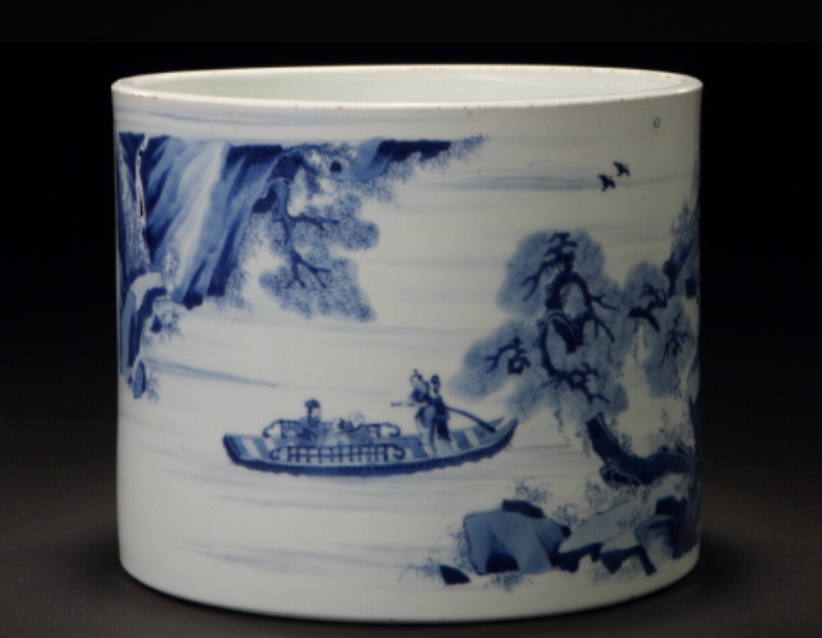
△ Qing Kangxi brush pot with “Ode to the Red Cliff” after, collected in the Palace Museum, Beijing.

△ Blue and white porcelain craftsmanship – outlining.
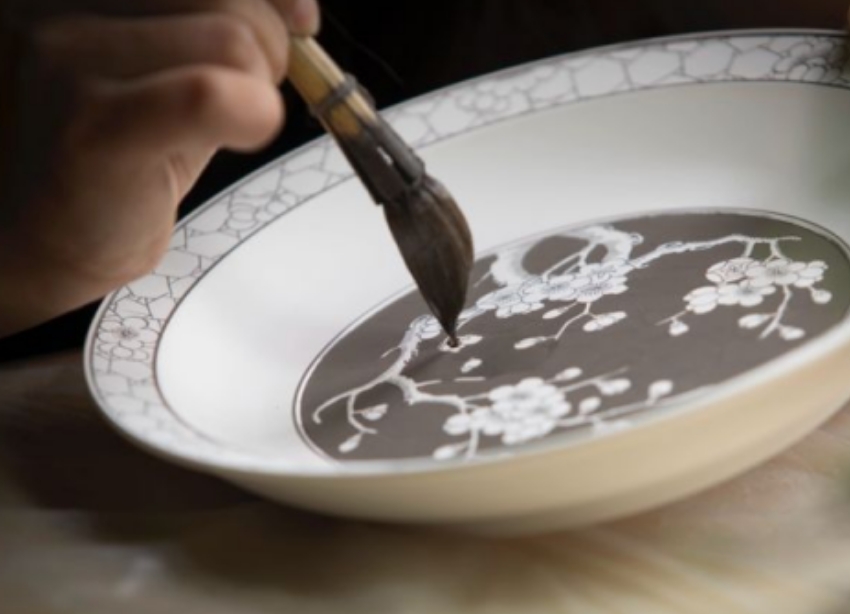
△ Blue and white porcelain craftsmanship – shading.
2,Jingdezhen-Linglong porcelain
The original meaning of “linglong” is dexterous, clear and translucent, just like the appearance of linglong porcelain itself. Its production process is extremely complex and delicate. Through the carving process on the porcelain body, many regular “linglong eyes” are carved. The hollowed-out parts are then filled with glaze. After firing, the hollow parts are also covered by the glaze layer, showing translucent bright holes.
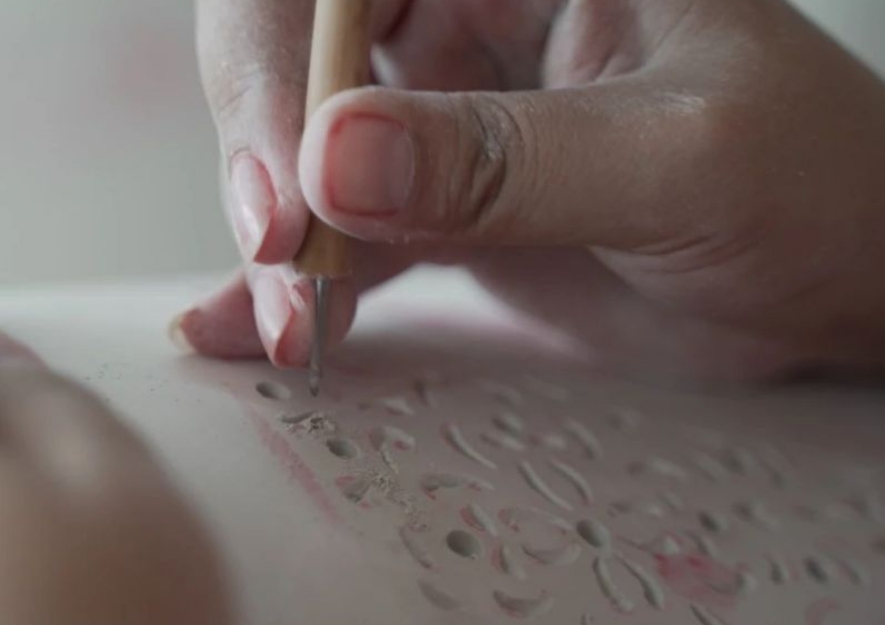
△ Linglong porcelain craftsmanship – carving.
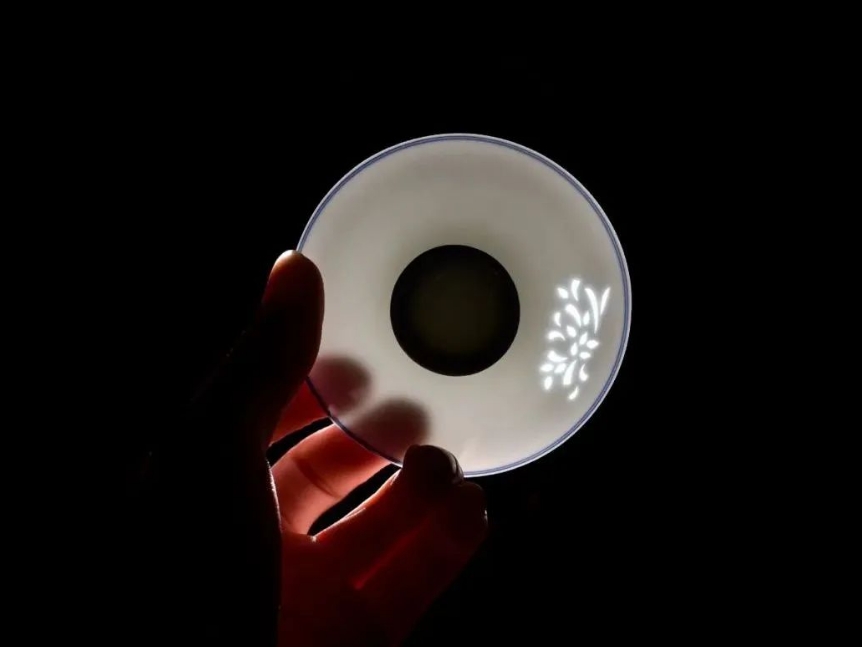
For the first time, people captured light on porcelain. Using light as a pen, patterns are painted, creating a dreamy overlap of light and shadow. Linglong porcelain combined with blue and white is called blue and white linglong porcelain. It has both the carving art and the characteristics of blue and white porcelain, presenting both simplicity and freshness.

△ Qing Qianlong white glaze bowl with passion flower pattern and linglong decoration, collected in the Palace Museum, Taipei.

△ Qing Guangxu blue and white linglong covered bowl, collected in the Palace Museum, Beijing.
3,Jingdezhen-Colored glaze porcelain
Among colored glaze porcelains, they are like gems in ceramics. Qianlong described them as “when arranging flowers, the flowers should be ashamed of their colors”. The glaze is as shiny as flowing oil, the color is like a rainbow and rosy clouds, and the patterns are like flowing clouds and waterfalls. Its red glaze is gorgeous and magnificent, the blue glaze is simple and elegant, the yellow glaze is clear and distinct, and the multi-colored glaze is mottled and ancient and elegant… And the crystalline glaze is even more infinitely changing, with a profusion of flowers and a radiant glow.

△ Qing Kangxi Langyao red glaze bowl with folded waist, collected in the Palace Museum, Beijing.

△ Qing Yongzheng tea dust glaze pot, collected in the Palace Museum, Beijing.

△ Colored glaze craftsmanship – applying glaze.

△ Firing kiln.
4,Jingdezhen-Famille rose porcelain
Among the four famous porcelains, famille rose porcelain was created the latest. It began in the late Kangxi period of the Qing Dynasty and was further perfected in the Yongzheng and Qianlong periods. At that time, craftsmen discovered the “glass white” pigment, which can make the patterns have a rendering effect and present a soft and charming feeling.

△ Qing Yongzheng famille rose porcelain celestial vase with peach and butterfly pattern, collected in the Palace Museum, Beijing.

△ Qing Qianlong yellow ground famille rose porcelain teapot with landscape pattern in medallions, collected in the Palace Museum, Beijing.
Famille rose porcelain also absorbs the techniques of meticulous brushwork painting, reducing the pattern decoration in previous painted porcelains. Using the rich realism of its pigments, it paints gorgeous and delicate pictures, which is a perfect combination of porcelain art and painting art. The wonderful brush of craftsmen can paint everything in the world.

△ Famille rose porcelain craftsmanship – overglaze painting.
Specific soil breeds specific culture. In China, there may be no place that values “craftsmanship” and “handicraft” more than Jingdezhen. Porcelain artist Tu Ruiming, in his Porcelain Notes, describes his observation of skilled craftsmen: “Good craftsmen exude an artistic charm in every move they make, almost like artists. For example, skilled potters can work with such ease that their handmade creations naturally possess a beauty—a certain elegance. Often, when they start, it’s as if they’re dancing!”
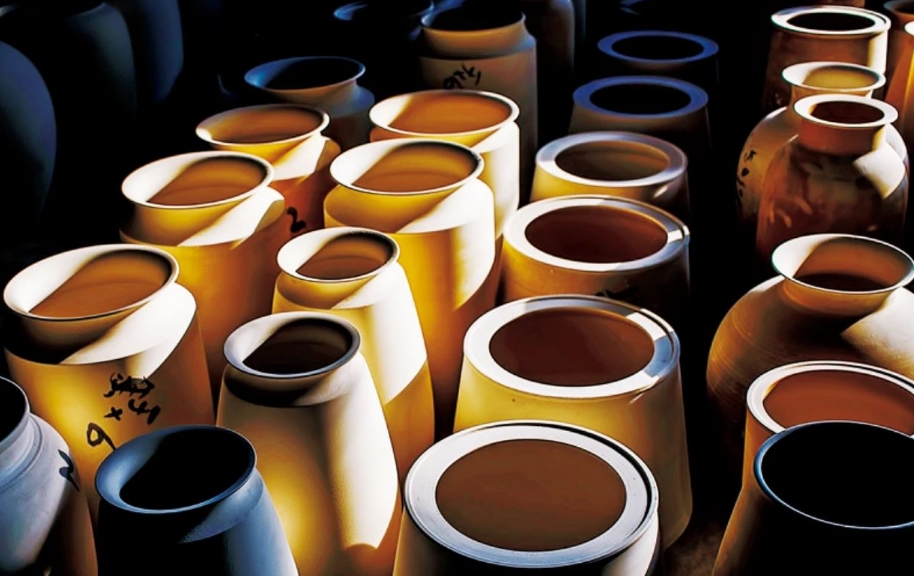
Jingdezhen’s Handcrafted Porcelain Art
Over 2,000 years, the oral and experiential transmission of craftsmanship, and the pursuit of refinement and innovation, have never ceased in Jingdezhen. Here, craftsmanship has evolved from simple technique to a unity of hand and heart—becoming an aesthetic and artistic sensibility that dances with the times.
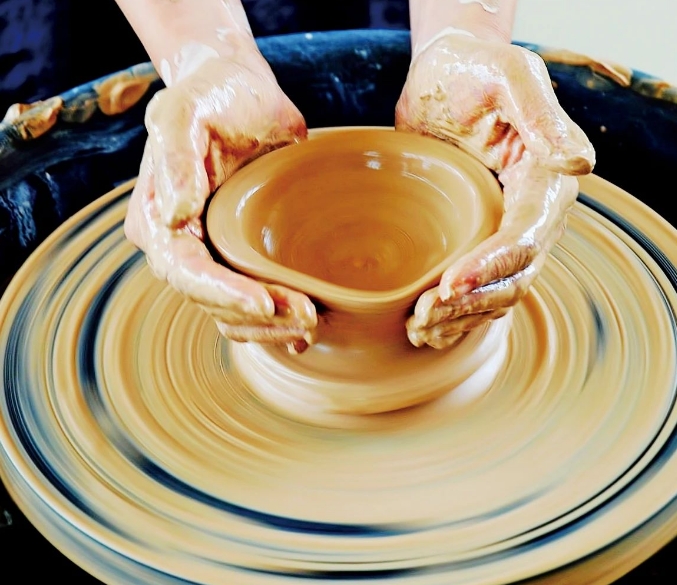
Jingdezhen’s Handcrafted Porcelain Art
The craftsmen of Jingdezhen, Jiangxi, once created porcelain that dazzled the world; today, new craftsmen from all over the world come to Jiangxi to pursue their dreams. Modern Jingdezhen has been recognized as the “World Capital of Handicrafts and Folk Art” by UNESCO. It is home to China’s only university dedicated to ceramics and has attracted artists and ceramic practitioners from around the globe.
Jingdezhen offers a tangible interpretation of the “craftsman spirit” to both China and the world: respecting tradition without being stuck in the past, believing in the power of slow and focused work, and, with unwavering dedication, creating a bold experimental ground for aesthetic innovation.
